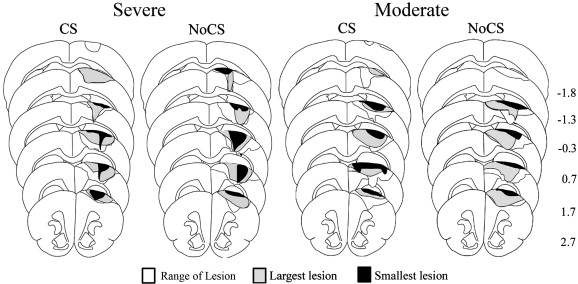Motor lesions
The clinical features like weakness, fatigue, pain, nervousness, tenderness, paralysis, sensory loss, and abnormalities of muscle tone or mass are the most general signs and symptoms noted in neural disorders. Fatigue, weakness, and nervousness are often presented altogether. This triune can generally be attributed to a functional disorder or emerge as a complication in organic disease. Common types of motor lesions are explained below.
(A) Lower Motor neuron Lesion (example, traumatic peripheral injury, polio -- poliomyelitis)
Lower motor neuron syndrome is described by the following symptoms:
1. Muscle paralysis or paresis (depending on severity of injury)
2. Total loss of muscle tone or reduced tone (i.e., hypotonia)
3. Total loss of weak response or reflex response from the muscles innervated (i.e., hyporeflexia)
4. Instantly following motor neuron axon lesion, muscle shows small, arbitrary contraction of motor units due to peripheral axon segment injury-associated APs and development of new ACh receptors on the muscle fiber membrane; such involuntary contractions ultimately disappear.
5. Muscle atrophy
(B) Upper Motoneuron Pathway Lesion (example, spinal cord portion; stroke -- rapid interruption of brain blood supply, hemorrhagic or ischemic -- including motor pathways)
1. Muscle paresis or paralysis
2. Increased muscle tone (i.e., hypertonia, mainly in flexors), due to loss of descending inhibition of alpha & gamma motoneurons.
3. Increased myotatic reflex response (i.e., hyperreflexia, “brisk” stretch reflex)
4. Frequently an oscillating response to short muscle stretch (i.e., clonus)
